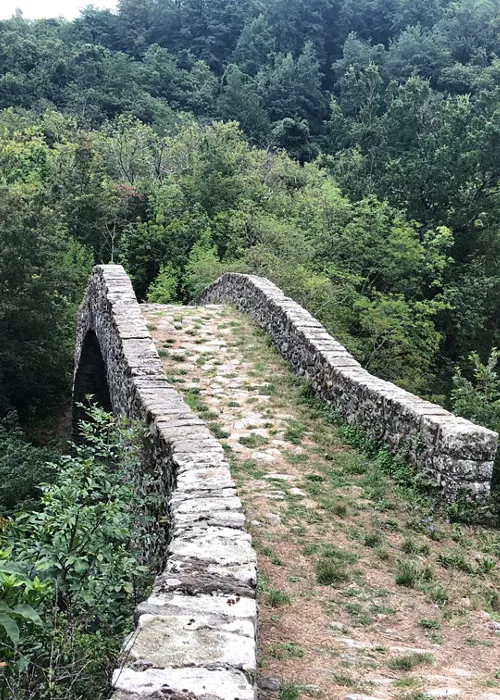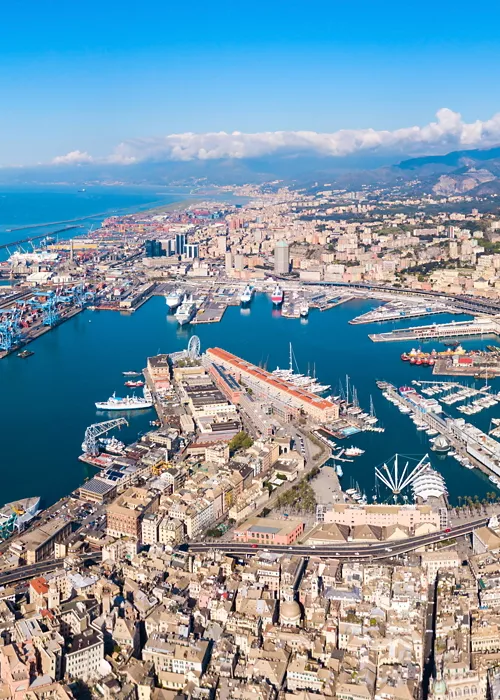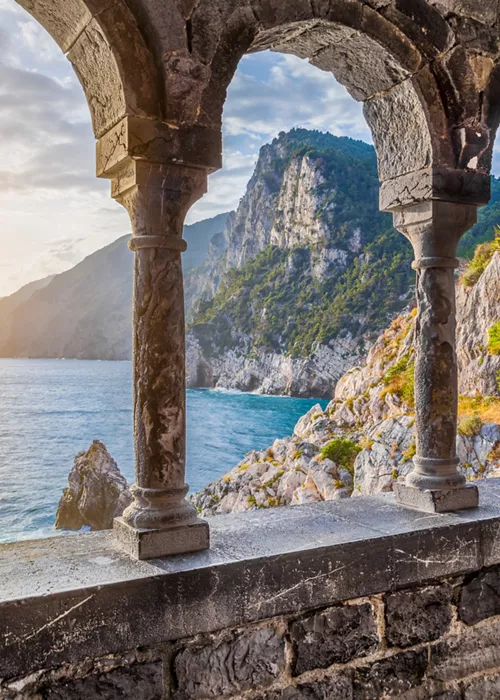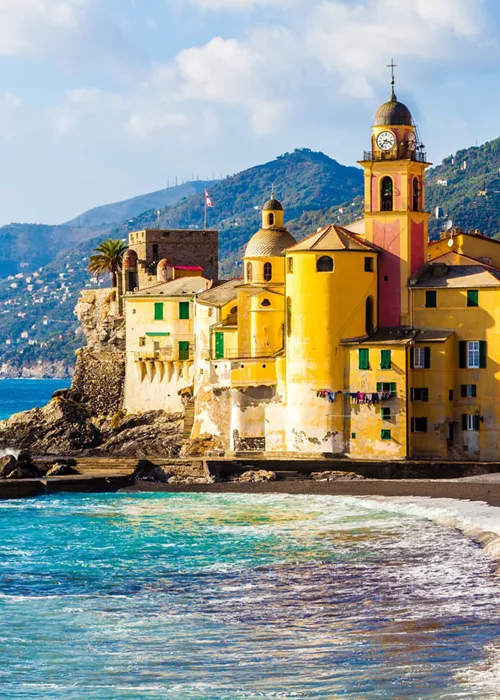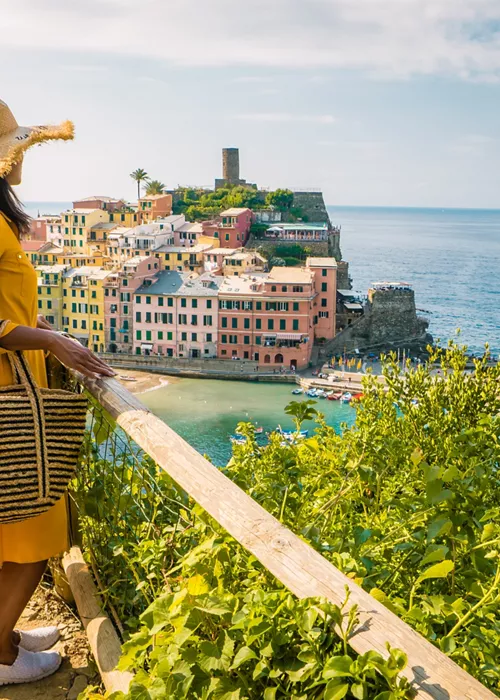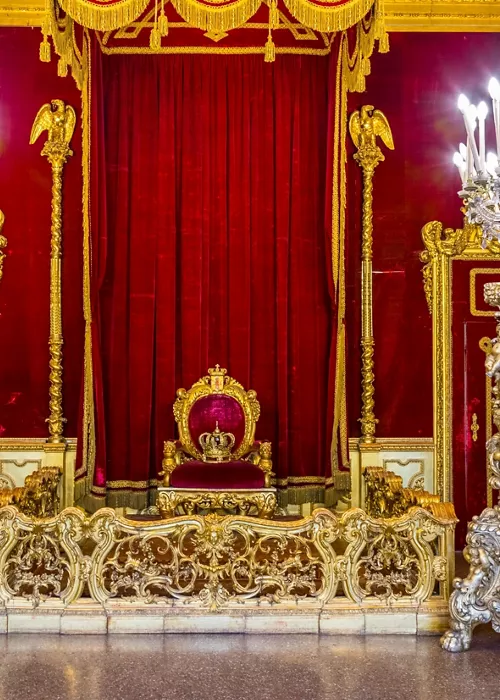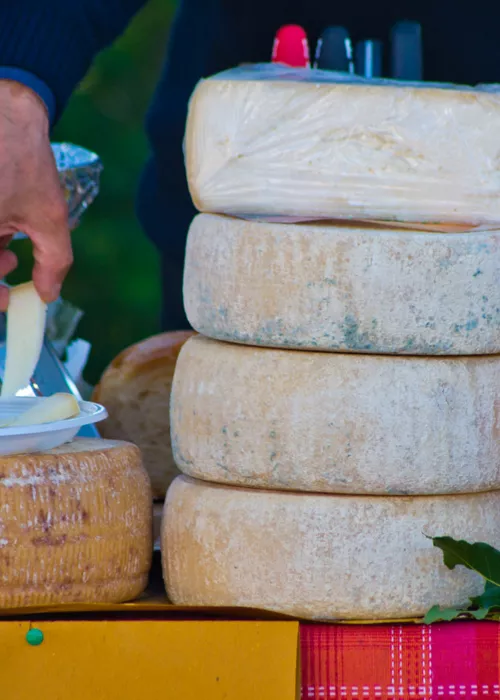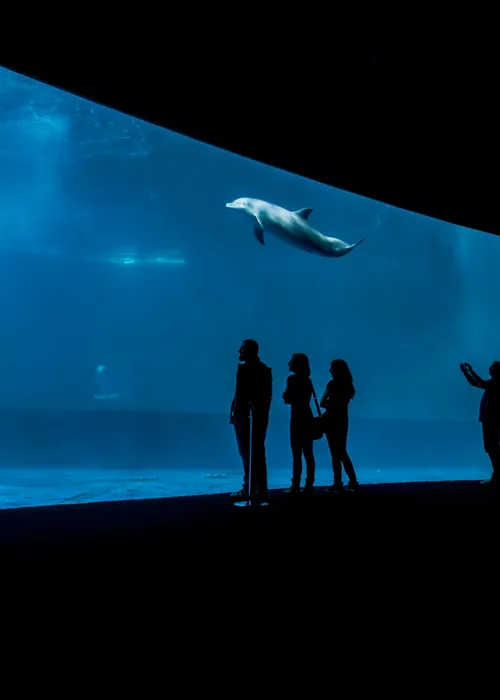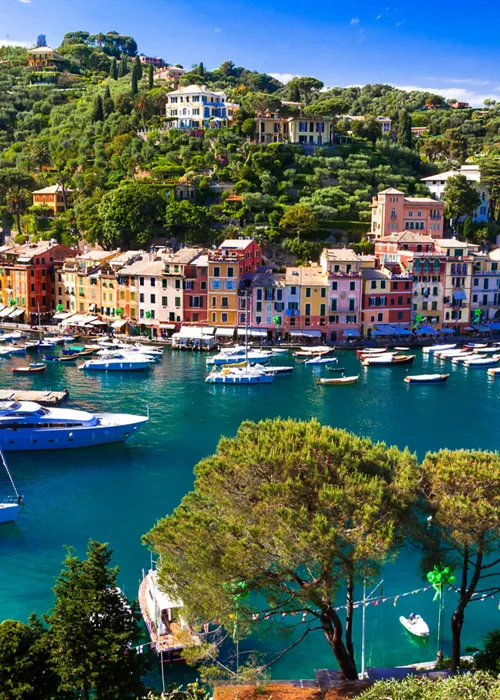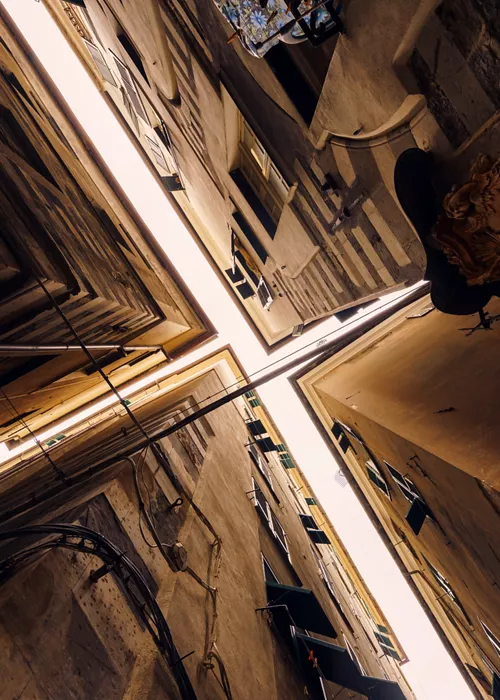Exploring the villages around Finale Ligure on the Western Ligurian Riviera
9 minutes

Index
Liguria is a region turned towards the sea, with an extensive coastline of more than 300 kilometres from the French border to Tuscany. The eastern part of the Ligurian Riviera, the Riviera di Levante, is the most famous with glamorous destinations known all over the world, such as Portofino and the Cinque Terre. But do not think that the western part of Liguria, the Riviera di Ponente, has nothing to offer! Beyond Sanremo, the most popular seaside resort west of Genoa, the Ligurian coast does hide well-preserved historic villages and a luxurious nature, well known by Italians - especially mountain bikers and hikers - but much less by international tourists. I spent a long weekend in Finale Ligure exploring one of the most beautiful parts of the Riviera di Ponente, from Borgio Verezzi to Noli. I had some of the best focaccia of my life and swam in one of the clearest water I've ever seen in the Mediterranean. What else could you ask for?
Finale Ligure

The peculiarity of the village Finale Ligure is that it is divided into four very distinctive parts: Finale Marina, Finale Pia, Finalborgo and Varigotti.
The busiest and most recent part, along the sea, is Finale Marina. This is where you will find most of the restaurants, bars, and beach clubs during the high season. The nicest part of Finale Marina is around its main square, the Piazza Vittorio Emanuele II with the Triumphal Arc of Margherita di Spagna, as well as one of the best gelateria of Finale Ligure, Carlin.
East of Finale Marina, still on the coastline, is Finale Pia, which developed around the Benedictine Abbey of Santa Maria Pia during the Middle Ages - and the abbey is still active today!

But you will find the most charming part of Finale Ligure inland: Finalborgo, classified as one of the Borghi più Belli d'Italia (most beautiful villages in Italy). The atmosphere in this well-preserved medieval village, the oldest part of Finale Ligure, is totally different. Still surrounded by fortifications, Finalborgo is known today for its handicraft shops. A walk to the fort perched atop the village (Forte San Giovanni, built by the Spanish in the 17th century) will give you a panoramic view of the sea. The old castle (Castel Gavone) is further up but currently closed.
In the centre of Finalborgo, the old Cloisters of Santa Caterina are home to the Archeological Museum (there are a lot of prehistoric and archaeological sites around Finale Ligure) and to a wonderful cafe that employs disadvantaged people, the Nonunomeno Bistrot ai Chiostri. Walking in the small streets of Finalborgo, you will also see a lot of beautiful palaces dating back to the Middle Ages and Renaissance, as well as the Basilica di San Biagio, a baroque-style basilica from the 17th century. If it's opened, I also highly recommend visiting (for free!) the Teatro Aycardi, the old theatre of Finalborgo, which was the first theatre built in Liguria during the Napoleonic era.
Don't be surprised to see a lot of mountain bikes in Finalborgo: it is also a popular centre for mountain biking and other adventurous activities in the surrounding mountains (if you are interested in that kind of activity, check out the Finale Outdoor Base).

Finally, more to the east, the small village of Varigotti is the last part of Finale Ligure and one of the most charming coastal villages I have seen in Liguria! This ancient fortified harbour, whose style is said to have been influenced by Saracens, has a series of quaint pastel-coloured houses along a beach with crystal-clear water.
After exploring the different parts of Finale Ligure, you have to (yes, have to) spend some time at the beach as you will find in Finale Ligure some of the cleanest beaches in Italy. In 2022, the Blue Flag was awarded to the beaches of Malpasso, Baia dei Saraceni, Finalmarina, Finalpia, Porto Beach, Varigotti and Castelletto San Donata. All are extremely good options for swimming or snorkelling. Even in October, the water was still at a perfect temperature. Some locals even told me that they sometimes swim until November!
Top 5 things not to miss
- The medieval village of Finalborgo and its castle
- The Archeological Museum of Finale Ligure and the other sites of the MUDIF (Museo Diffuso di Finale - Diffused Museum of Finale). Be sure to check out the opening times of those sites since they are only partially open.
- The beach of Varigotti and its colourful houses (the perfect place for a swim)
- A "focaccia crawl" in the best bakeries of the Finale Ligure area (don't miss Pomo d'Oro in Finalborgo, Da U Cicci and Pippo in Finalmarina)
- Eat fresh fish and seafood, as Finale Ligure is also well-known for its fishing. There are some nice restaurants on the beach in Finale Marina.
Finale Ligure: Useful Information
Best time to visit: if you are interested in history and archaeology, it is best to visit Finale Ligure in the summer as the opening times of the sites are very limited off-season. Otherwise, spring and autumn have much nicer temperatures and still a lot of possibilities for hiking, biking or boating.
How to get there: Finale Ligure is very easy to reach by train: there are direct trains to Finale Marina from Genoa and Milano, and sometimes this is even quicker than the car! From Finale Marina, you can reach Finale Pia on foot and Finalborgo and Varigotti by bus (Line 40). If you still decide to come with your car, be aware that the centres of Finale Marina and Finalborgo only have a few free car park options.
Borgio Verezzi

Located only a few kilometres away from Finale Ligure, Borgio Verezzi is also an association of two very different villages: Borgio on the seaside and Verezzi on the mountainside. Legend has it that it was founded by Saracens pirates who fell in love with the area. Both parts have kept their historic centres, but while Borgio has now extended into a modern seaside resort, Verezzi has kept its old-fashioned medieval centre with its stone architecture. Well, its medieval centres, to be precise, as the few streets of the village are scattered around four little hamlets: Crosa, Piazza, Roccaro and Pioggio, all connected by "carruggi" (medieval streets) and "creuze" (old mule tracks).
The main square of Verezzi is Piazzetta Sant'Agostino, with its church from the 17th century (Chiesa Sant'Agostino) and a breathtaking view of the Riviera di Ponente, one of the main reasons why Verezzi has been classified as one of the "Most Beautiful Villages in Italy" (Borghi più Belli d'Italia).
From the Verezzi hamlets, a quick walk will bring you to the top of Mount Orera. Good hiking options start from the church of San Martino. Easy-to-follow paths will allow you to discover historical sites such as the Fenicio mill (an old mill from the 11th century), the Castellaro (the archaeological site of an ancient settlement from the Iron Age), a Dolmen, a lot of caves and some rock carvings.

Going back down to Borgio, you shouldn't miss a guided tour of the Borgio Verezzi Caves (Grotte di Borgio Verezzi), known as the "most colourful in Italy". For about 1 hour, you will tour several rooms with a great amount of stalactites, stalagmites and some small lakes. Visits are both in English and Italian.
Top 5 things not to miss
- The views from Verezzi Alta, the highest part of the village, and especially from the Piazza Sant’Agostino.
- The picturesque churches of Verezzi
- The hiking trails in Mount Orera: good options are the "Sentiero Natura" (Nature Path) and the "Sentiero Cultura" (Culture Path).
- The caves of Borgio Verezzi, open daily for guided tours which need to be booked in advance.
- Try local seafood: there are some restaurants with great views in the upper part of Verezzi.
Borgio Verezzi: Useful Information
Best time to visit: it is possible to visit Borgio Verezzi all year round, although temperatures in Spring and Autumn are best for hiking and biking. Verezzi is famous for its Theater Festival, happening every summer. Also happening in the summer (on August 13 and 14) is the small festival dedicated to the local speciality, "lumache alla verezzina" (snails Verezzi-style).
How to get there: Borgio Verezzi has a train station (on the Borgio side) and direct connections to Genoa. To reach the upper part of the village, Verrezzi, you can take the bus (Line 84) or walk (2 km mostly uphill).
Noli

East of Finale Ligure is Noli, a charming Medieval seaside village dominated by a 16th-century castle (Monte Ursino Castle) and also one of the "Most Beautiful Villages in Italy" (Borghi più Belli d'Italia). From the 12th to the 18th century, Noli was an independent Maritime Republic, thanks to its very active harbour and the protection of the Republic of Genoa.
The best way to discover Noli is to just stroll around the medieval caruggi of its medieval centre, surrounded by fortifications, one of the best preserved in Liguria. During your walk, you will be able to see the Municipality Palace (15th century), the San Pietro Cathedral (13th century), the San Paragorio Church (11th century - one of the best examples of Roman Art in Liguria and a National Monument), the Sant'Anna church (18th century), the Piazza Morando with its tall Canto Tower, the Piazza Dante with the Marina Tower, and a lot of medieval houses. There are just so many things to see in such a small village, but full of history.
There are good hiking trails west of Noli towards the Capo Noli. The most popular itinerary is the Sentiero del Pellegrino (the Pilgrim's Path), which connects Noli to Varigotti through a well-marked path with amazing views of the coast and the Saracens Bay. The path starts in Via strada vecchia in Noli. I also took a detour to the famous Grotta dei Falsari (Forgers' Cave), which is like an open window to the Mediterranean sea. Another trail is called "Dante's Path", in reference to the fact that Noli was mentioned by Dante in his Divine Comedy.
Noli also has some sandy beaches, which are not that common in the area. The main beach, facing the village, is big and has great clear water, as well as nice lidos. If you prefer wild creeks, you will find them around Capo Noli. But be careful as they are not always very easy to reach.
Finally, fishing is still important in Noli today and the village maintains the tradition of "pesca alla sciabica", a traditional way of fishing with nets. You will see the small Fishermen's boats on the Spiaggia dei Pescatori, where there is a small fish market every morning. Noli is also famous for its salted anchovies and its "cicciarello", a small fish eaten marinated and fried.
Top 5 things not to miss
- Walk around the well-preserved medieval centre of Noli.
- Hike the Sentiero del Pellegrino from Varigotti to Noli, for the best coastal views.
- Take a detour to the famous cave of Noli, Grotta dei Falsari (it's quite an adventure to get there, but it's worth it!).
- Try the local fish (I recommend Bagni Letizia, directly on the beach and with decent prices).
- In the summer, you can snorkel to the Nemo's Garden, the first underwater cultivation of terrestrial plants.
Noli: Useful Information
Best time to visit: you can enjoy Noli beaches from Spring to Autumn. Summer months are hotter and busier. The cicciarello, the fish specialty of Noli, is celebrated during the Sagra del Cicciarello, a small festival happening on the first or second Sunday of June. In September, Noli organizes another great festival for foodies, La Repubblica del gusto, a food and wine event showcasing local products.
How to get there: Noli does not have a train station. The easiest way to reach Noli by public transportation is to take a train to Finale Ligure Marina, then a bus (Line 40) to Noli. The bus also stops in Varigotti, if you are hiking the Sentiero del Pellegrino one-way.
Article written about the experience of Emmanuelle Hubert - Au goût d'Emma.





